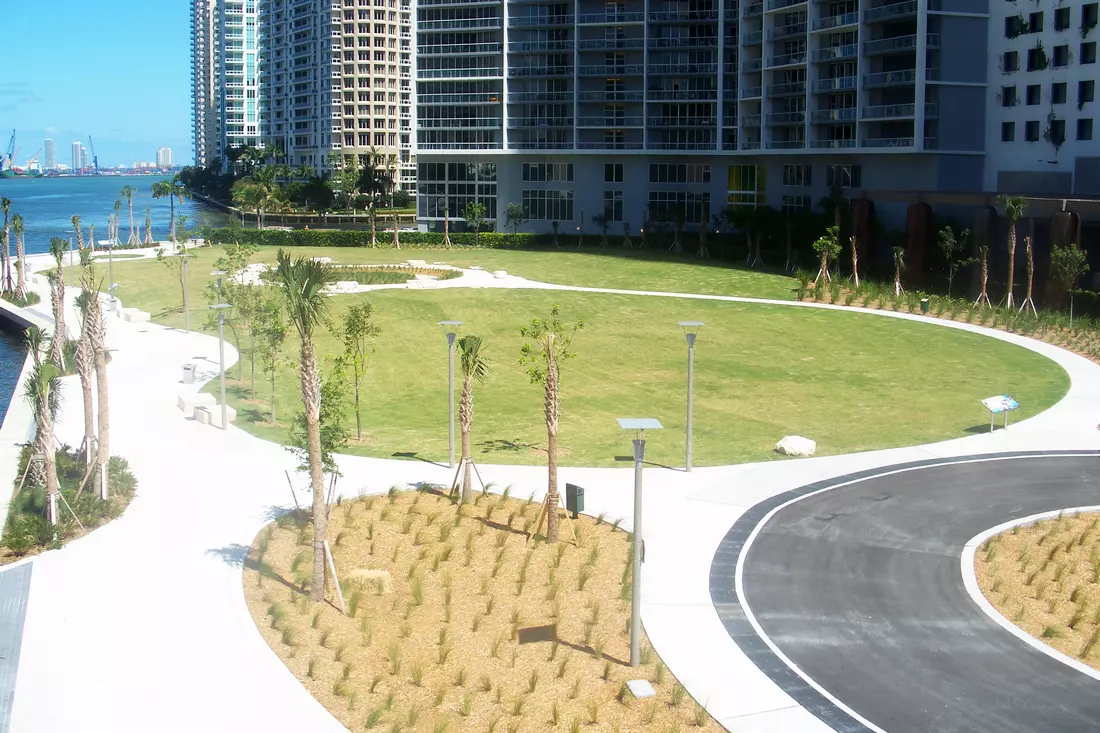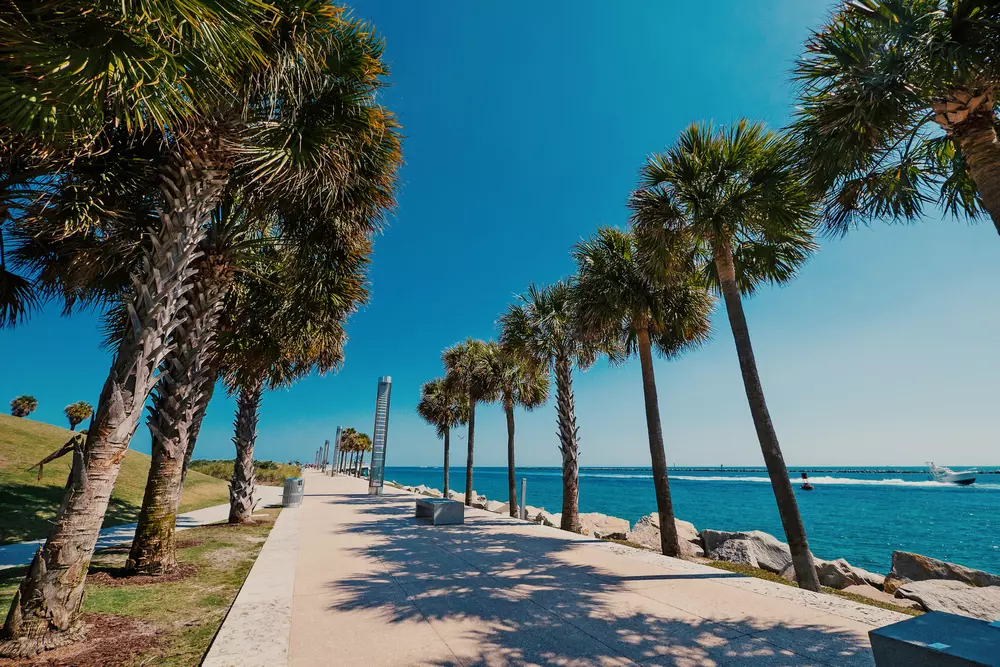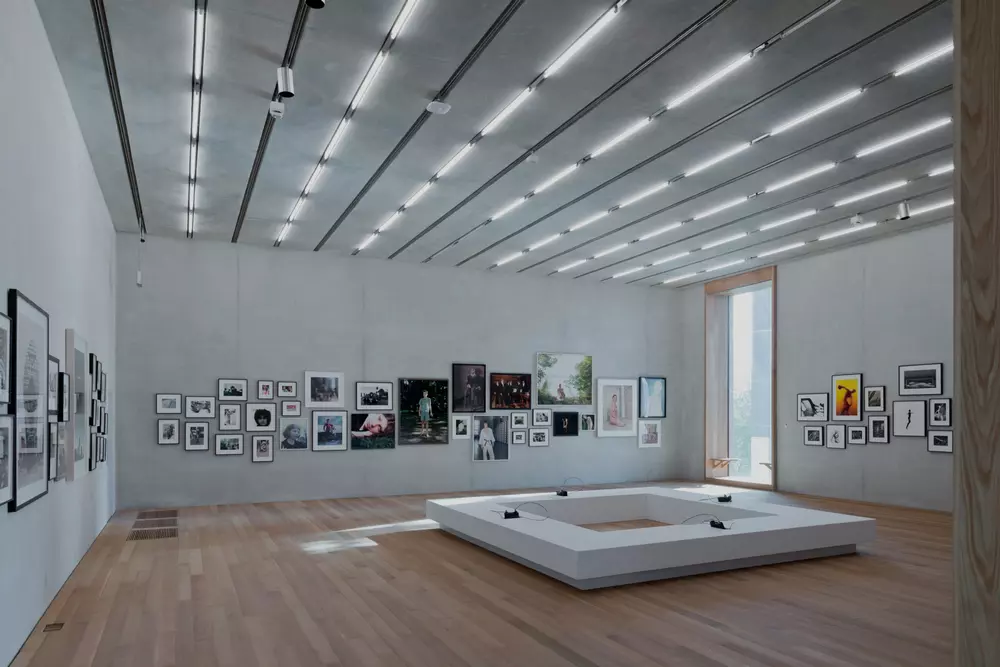The origin of the mysterious circle in Miami
The Miami Circle at Brickell Point is a historic landmark in Miami of great national significance in U.S. history. The Miami Circle with a diameter of 11.5 m, containing 24 large holes and many small excavations cut from limestone rock, is one of the most mysterious places in North America.
The archaeological value, located on the banks of the river in the city center, almost lost during the construction of a luxury skyscraper in 1998, is the only evidence of the existence of prehistoric Indians on the east coast.
The emergence of a unique, nothing like this has ever been found in Florida. The historical artifact is associated with the Indian tribe tekesta (Tequesta). This is the main theory, which was substantiated by archaeologist and representative of the historical society of the United States Robert Carr, who excavated the circle in Miami.
Scientists have determined the approximate age of the structure — 2000 years. However, this period, according to historical information of the 16th century, is not characterized by Indian tribes living in southern Florida. The construction of any facilities was not discussed either.
Theories of the origin of the artifact, in addition to the main one, were several:
- built by the South American Olmec tribe, who knew how to make amazing objects of art from stone;
- created by Maya civilization;
- The Miami Circle arose as a result of natural processes.
All these assumptions were rejected by scientists and archaeologists, because there is no evidence of the Olmec and Mayan tribes in Florida, and the shape of the find clearly indicated the circle’s man-madeness.

The entire previously described tekesta life story is refuted by the results of a study of the circle in Miami.
What was the circle for the Indians
The proven prehistoric origin of the circle raised many questions regarding the purpose of its use by the tribe of the tekest. Three versions were considered:
- Religious building, temple;
- House of the leader of the tribe;
- The basis for the platform on the pillars, lifting the houses of the village above the ground.
Based on the data available to the researchers, the Indians who lived at the mouth of the river did not build capital houses, any structures or monuments. They hunted deer and alligators, engaged in fishing, making long canoe trips in search of manatees and sharks.

Features of the Miami Circle
Also in the Miami Circle, archaeologists found two butts of an ax made of basalt, the volcanic material of which had never been on the shores of Florida. Presumably tekesta purchased them or exchanged from other tribes living in the territory of modern Georgia. In a circle, things valuable to the Indians were put as a result of an offering, which confirmed the first two Miami Circle theory of destination.
A hole in the shape of an eye, a one and a half meter long skeleton of a shark located on the eastern side of the circle, a tortoise shell, with its head also facing east, spoke in favor of the find as a place for performing rituals. However, further studies of the sites of other Indian tribes revealed a clear difference from them circle:
- lack of a central place for a fire;
- the presence of holes along the circular perimeter, which called into question the possibility of using the circle on the surface of the earth.
Scientists have discovered artifacts up to 2500 years old at the mouth of the river. A comparative analysis of the objects found (fragments from dishes, animal bone products, tools) with the finds stored in the museum of the city of Miami as things of the tekest tribe, showed their complete coincidence.
The location of the Miami Circle, on the shore of the bay, is characterized by strong winds, hurricanes and dangerous tides. Given these characteristics, the researchers suggested that the Indians tekesta raised their homes above the earth using pillars. The latter did not support the walls, so the holes do not have a clear structure. Wooden poles supported the platform where the house was being built.
In a humid Florida climate, wood supports needed constant replacement, for which new recesses were hollowed into the limestone platform. Similar cuttings in the limestone, found around, give reason to believe that there was a large settlement on this site. Circles found later with similar holes were also built around 2500 years ago.
The first settlers of South Florida built life on this territory not from the 16th century, as history claims, but much earlier, in prehistoric times, being able to build structures that protected and protected their lives.

Additional Information
-
Address
-
Hours
Around the clock
-
Cost
Free
-
Website
| Address | |
| Hours | Around the clock |
| Cost | Free |
| Website |





























